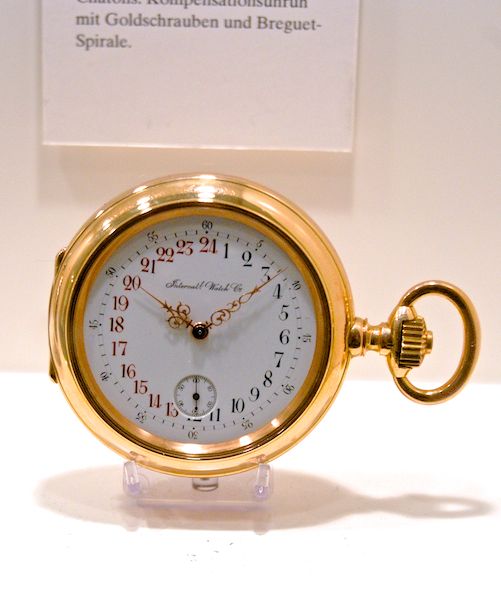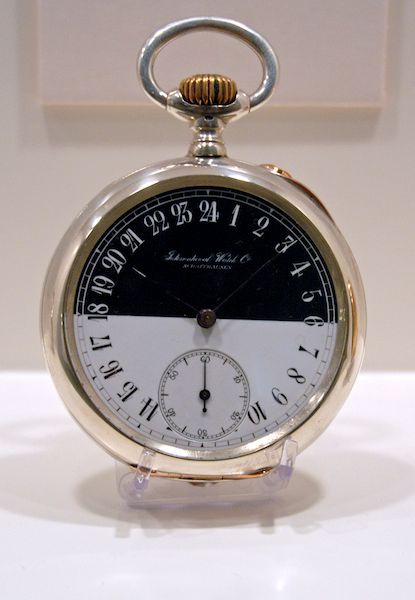Oh, how I wish Isobars were here now! As only some of you old-timers will remember Isobars was one of this forum's most active members during its first five or so years. He constantly, sometimes daily, raised the subject of 24 hour dials. Every watch would be better if it only had a true 24 hour dial. You can even find drawings of proposed 24 hour watches in honor of Isobars in the archives.
As many of you know, a 24-hour dial watch is not one with both 12 hour and 24 hour indications on the same dial. When the hour hand points to 7, with a small 19 below that, that's really a 12-hour watch with additional notation. When it's evening, the reader doesn't have to think to realize that the time is actually 1900 hours.
A real 24 hour dial watch only has 24 hour dial notation on the dial. That means that the movement has to be altered so that the hour hand doesn't go in 360 degrees around the dial in 12 hours, but rather in 24 hours. The hour hand, in my example, would only show 1900 hours. You'd know for sure that it was early evening.
Now Isobars would have argued that this is more logical and more precise, just as the metric system is more efficient than the silly measurement system of miles and yards and feet we have in the U.S. He probably is right --but it does crowd the dial, and also it's more difficult for most people to adjust.
Still, those watches have a place in horological history. And the movement is different by being modified. Conventional 12 hour watches have a "motion work" involving a 12 to 1 reduction in the gear train from the minute hand. 24 hour watches have a different gearing, with a 24 to 1 reduction. To be very technical, "the motion work is the small 12-to-1 (or here a 24-to-1) reduction gear train that turns the timepiece's hour hand from the minute hand. It is attached to the going train by the friction coupling of the cannon pinion, so the minute and hour hands can be turned independently to set the timepiece. It is often located on the outside of the movement's front plate, just under the dial."
The first time I learned that IWC made one was in its Museum, where they show this piece:
I've never seen another one, and I've seen now a lot of IWC pocket watches.
That is, until a good friend and forum member wrote me about a month ago. He pointed out that there was such a watch up for auction in London. It looked like this, but unlike the Museum's example only had black hour digits:
The movement didn't look a lot different than a "normal" Calibre 53 --actually the watch is from the early 1890s and back then it was called the "International Calibre": But technically it shouldn't look different --it's on the dial side that the motion work modification is made!
But technically it shouldn't look different --it's on the dial side that the motion work modification is made!
Now, as many of you know I have a lot of old IWC pocket watches. Too many, in fact. So I try to limit them now to only unique examples produced before 1900. I figured that might stop me buying too many --but not this time. The watch is unique (only the second one I've seen) and is pre-1900. Only thing was that I had to vet the watch. I found out from IWC that the case and movement numbers were correct and in their archives, in fact with the rare notation that the watch had a 24 hour dial! It was for real.
My friendly enabler then took a Sunday off, and went to London for me. He sent me dozens of photos of the watch; even some movies. He couldn't have been more helpful in getting me to bid!
Actually, while I have an account at the auction house, another good UK friend stepped in. An international purchase can be cumbersome, and he too had an account there. He'd be happy to bid on my behalf --and so I gave him my bid. And --voila!-- at the high end of my range the hammer fell in favor of my friend's bid on my behalf.
Now I have to take possession of the watch, and a third forum friend is helping there.
Thanks a lot guys, and how I wish Isobars would check this one out!



